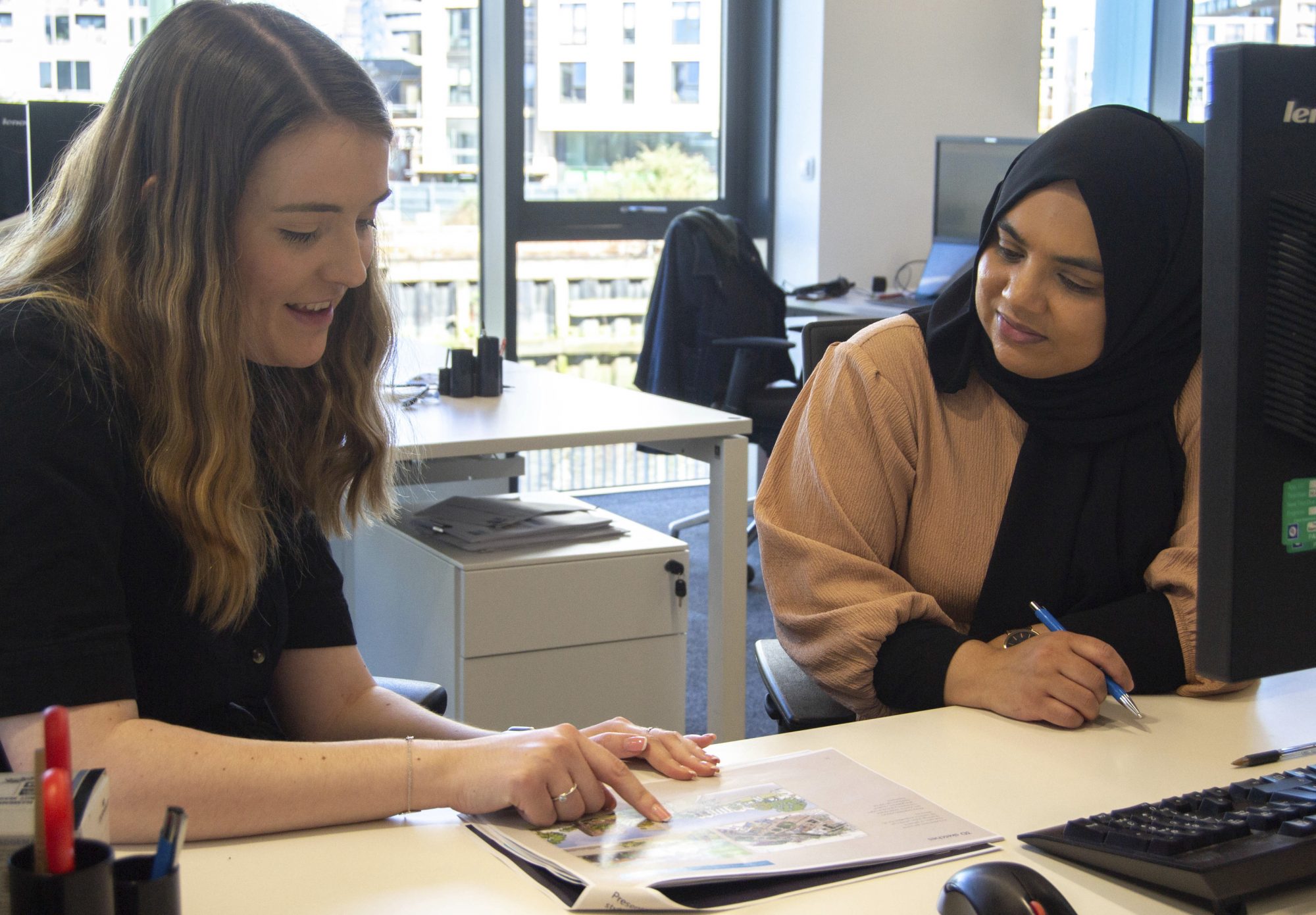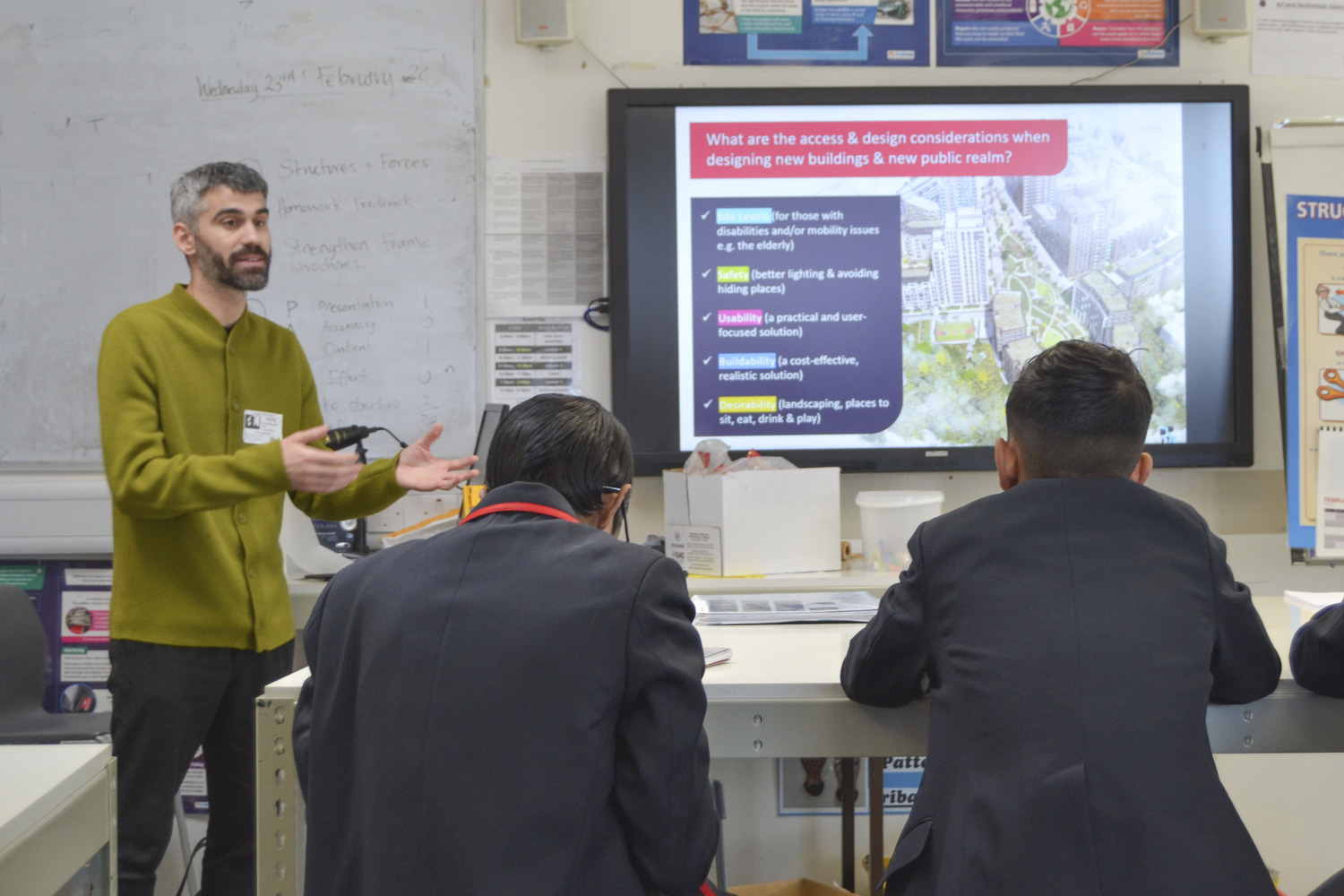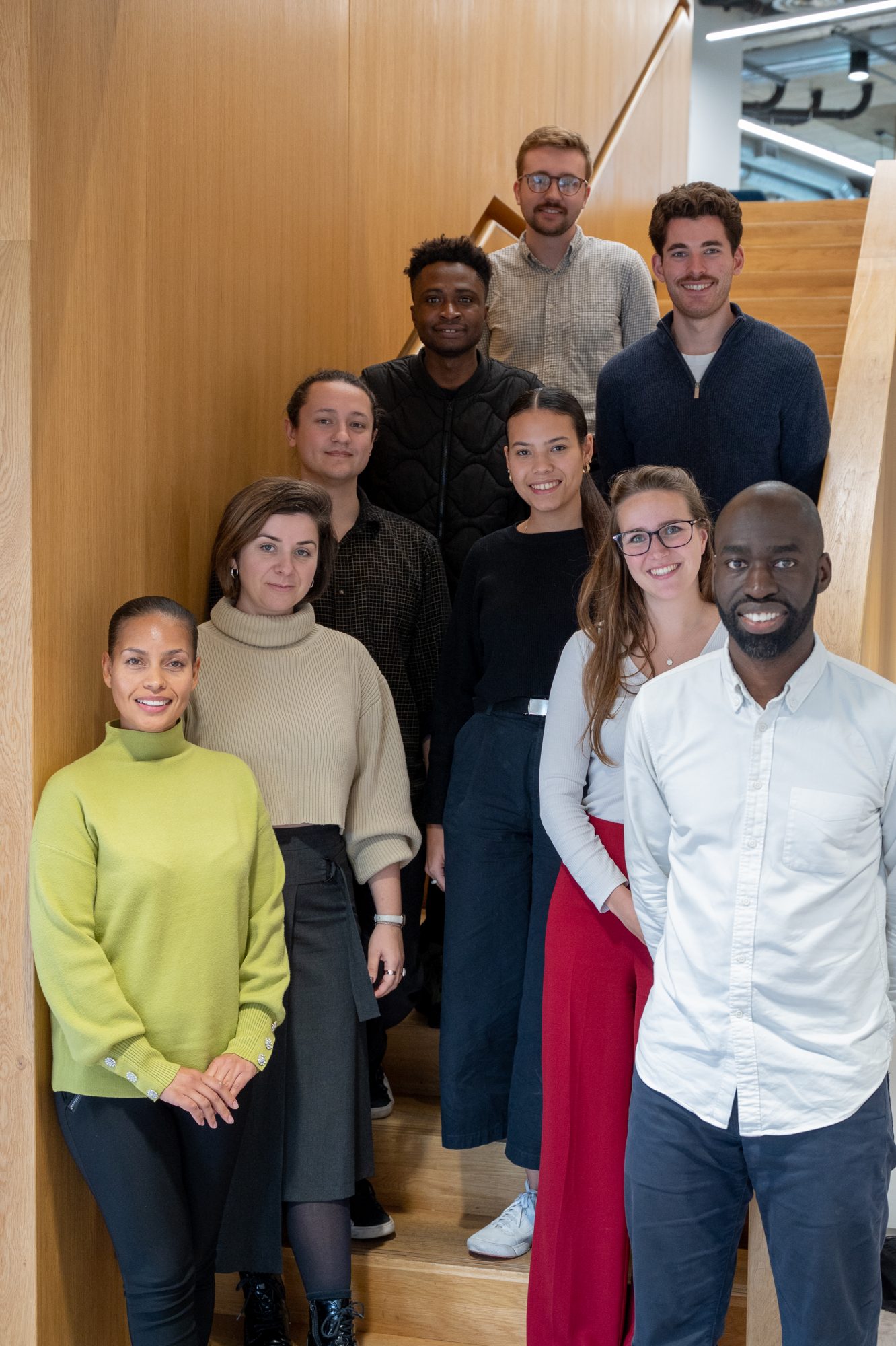11 - 01 - 2024
Written by BPTW Senior Associate Peter Sofoluke and first published by Building Design on 11 December 2023.
Peter Sofoluke on how alternative education routes are reimagining access to the architectural profession, improving diversity, and challenging the status quo.
Architectural practice and academia often co-exist as two competing entities, regularly engaged in a push and pull conflict between ‘the realities of practice vs creative freedom’. The ARB’s Tomorrow’s Architect educational reforms will conclude in 2027 and look to shake up the existing academic-focused system by bringing these entities closer together. However, the rapid uptake of alternative vocational routes suggests that change is happening now.
Through this two-part opinion piece, I will, firstly, highlight the importance of early practice intervention in better supporting aspiring architects on their journey to qualification and explore how a vocational approach can create a more accessible profession and, secondly, I will look at how these alternative routes can strengthen the relationship between practice and academia for the benefit of the profession as a whole.
The architectural education system as we know it today has been in existence since 1958. A singular route comprising three distinct gateways. Often the elation a student of architecture feels after completing each of the first two gateways (Parts 1 and 2) can be short-lived as the realisation dawns that these achievements are not the end of the overall journey to becoming ‘qualified’.
Embarking on an architectural career at 18 is a risk in the sense that most young people are still at an explorative stage in their career thinking and may be starting their journey with limited or no exposure to the realities of architectural practice or other careers in the built environment. In my case, I had an early age interest in the design process, particularly through drawing and creating models, which led me towards architecture. However, I found it incredibly difficult to connect with people or find openings in the industry to explore what this interest would mean for me as a career. I therefore began my architectural education with no prior experience. This for me was a risk that weighed heavy on the mind; the 7-year minimum commitment to qualify in a profession I had a keen interest in but had little experience of.

With the increased rates of tuition fees to be paid over six years, coupled with maintenance loans, and the cost of living, the financial impact of architectural study is even more of a consideration for aspiring architects today. One of the overarching effects of this increasing financial burden is that we will continue to be a profession that lacks diversity (across several categorisations of the term), as a career in architecture increasingly becomes viable only for a privileged few.
The ARB’s 2023 Equality and Diversity survey based on a sample of 77.5% of UK registered architects illustrates that only 469 out of 33,214 architects (1.4%) are Black or Black British, and one-third of architects are female. Compared to the proportions of the same groups passing through the architectural education system, 9% of Part 1 entrants identified as Black or Black British whereas the female population was over 50% (RIBA Education Statistics 2020-21).

Interestingly, socio-economic data does not seem to be readily available in any surveys, despite clearly being a significant determinant when we consider barriers to architecture study today. However, from my experience from 21 years in study and practice, I feel confident in asserting that our profession currently suffers from a lack of socio-economic inclusion.
Whilst there is some useful work being done through outreach such as the RIBA’s National Schools Programme, there is clearly still fundamental work to be done in addressing under representation and breaking down accessibility barriers in architecture. The question that we need to overcome is why specific groups are particularly challenged through the current education system?
Drawing on my early experiences, I have come to the belief that to truly address these imbalances a long term and two-part approach is required.
Early exposure to practice and mentoring
Firstly, I believe more direct intervention from the profession is required at a stage prior to students embarking on formal or traditional architectural education. In practice at BPTW we have looked to affect this change initially at a local level, devising our ‘Careers in the Built Environment’ programme where we have seen 31 work experience placements pass through our doors since the start of 2022; this includes 19 students from global majority backgrounds.
In a short period of time, students undertake a fictional project that exposes them to a range of media and skills that an architect would utilise. They would present their final project to a small group within the studio and leave having curated a portfolio of their project which they could submit as part of their university applications. Mentors are also on hand to answer questions they may have about the realities of architectural practice.

Some of these students come through our social value commitments on projects. However, the majority have come through our engagement with schools and colleges local to the practice. This initial exposure provides a base for students to gain further knowledge before starting an architectural course. It also offers an opportunity for students to develop a further relationship with a mentor who can guide them through the start of an architecture course.
Thinking back to myself as an aspiring architect, I would have benefitted from such initiatives being in place.
In a meeting I had with Neal Shasore, Head of School at the London School of Architecture, we found common ground on the subject. It transpired that both BPTW and the LSA had independently devised programmes with a similar goal. In a previous interview with BD, Neal stated that “ever stronger demands for social justice requires schools of architecture to intervene at a much earlier stage with young learners”.
Thinking back to myself as an aspiring architect, I would have benefitted from such initiatives being in place. I have since been connected with other practices with similar initiatives and we have discussed the development of a formal structured programme that could expand beyond London.

Diversifying routes to entry
Secondly, it is important to diversify the means by which aspiring architects can become qualified. My practice took the decision over five years ago to support students through hybrid Part 2 course routes. In 2018, we had our first level 7 apprentice through the Oxford Brookes course, at the same time as our first student on the Sheffield Collaborative Practice hybrid Part 2 course, both of whom are now qualified architects.
Since then, we have seen an uptake in our architectural assistants opting for hybrid study routes; there are currently nine individuals at BPTW who have either completed or are currently undertaking a hybrid Part 2 course with a number of different providers including The University of Nottingham, Cambridge University, and the London School of Architecture.
As a profession we should be embracing the development of these alternative education route.
The multiple reasons behind the choices of individuals to follow these alternative routes include, amongst others, being financially or lifestyle-driven, or based on a desire to be more immersed in the reality of working life. These reasons will be explored further in the second of my two articles. Whatever their reason, we are now in a position where the routes to our profession are becoming less restrictive, and this availability of choice can only, hopefully, lead to a more accessible profession with fewer barriers to entry.

The ARB’s announcement to introduce a new regulatory framework is another interesting development that seeks to open up access to the profession and aims to shift the focus of accrediting bodies from ‘qualifications’ to ‘competency’. This will hopefully open the door further for individuals currently underrepresented, such as older professionals seeking a career change to architecture – currently a daunting prospect within the current lengthy architectural education system.
As a profession we should be embracing the development of these alternative education routes, including broader introductory courses to the built environment, hybrid courses and apprenticeships; they open the door for more people with a diversity of ideas and different experiences to become architects regardless of background.
Architecture, as I know it, is a profession fundamentally rooted in the understanding of people, and should draw influence from all of our lived experiences. Our population, and the people we are designing for, come from a range of diverse backgrounds, so it is important that those who shape our built environment reflect this.
Peter Sofoluke is a Senior Associate at BPTW. He is passionate about improving diversity and inclusion in the industry and spearheads BPTW’s EDI steering group and graduate recruitment. He is currently leading BPTW’s London School of Architecture engagement and oversees the practice’s Careers in the Built Environment programme, which has hosted 31 work experience placements in 2022-23, including 19 students from diverse backgrounds. He is also a Part 3 examiner at the University of Westminster and for the RIBA Academy.
Recognised as one of the UK’s most diverse practices by the AJ100, BPTW advocates for inclusive architectural education, enabling people from all walks of life to qualify and contribute to a better environment. We believe apprenticeships are vital to this and have supported apprentices since 2018, with five employees currently studying or qualified using this route. We are a London School of Architecture Practice Network Partner and successfully run our Careers in the Built Environment programme with partners like London South East Colleges and Hammersmith and Fulham Council
Sources
ARB’s Equality and Diversity Data, dated October 2023 – https://arb.org.uk/about-arb/equality-diversity/data/
RIBA Education Statistics, dated 2020-2021 – Education statistics (architecture.com)
BD article titled “LSA launches radical new strategy for architectural education”, dated 19 December 2022 – https://bit.ly/3Nd55ng


